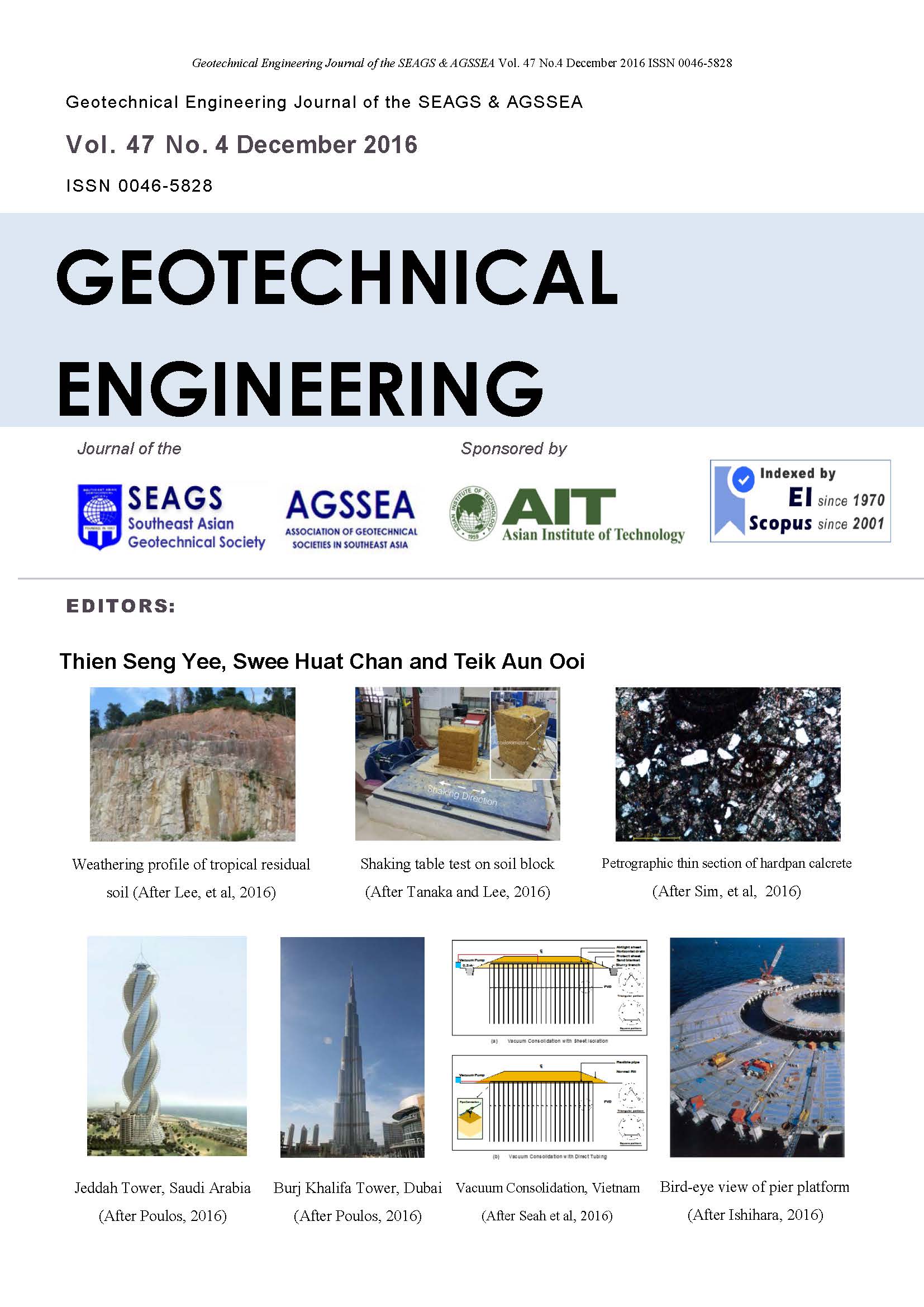A Vibro Stone Column Supported Test Embankment for a High-speed Rail Project in Malaysia
Main Article Content
Abstract
The Ipoh-Padang Besar Electrified Double Track project is a multibillion dollar high-speed rail project that involved installation of double tracks, electrification work, construction of stations, bridges and tunnels. Stringent performance specifications governed all aspects of the project. Various ground improvement techniques were employed, including Vibro stone columns to support railway embankments. The primary function of Vibro stone columns was to reduce settlements of the newly constructed railway embankments. As part of the project requirements, a low test embankment supported by Vibro stone columns was built and monitored. The purpose of this test was firstly to demonstrate that Vibro stone columns would not result in “hard points” at the surface of even a low embankment. The second purpose was to validate the designed rest periods for consolidation settlements, based on the proposed calculation methods. Vibro stone column installation commenced in June 2008, embankment construction commenced in February 2009 and the test embankment was monitored up till March 2010. Throughout the monitoring period, instrumentation and visual inspection showed that no “hard points” were observed on the embankment surface. In addition, it was shown that Priebe’s (1995) method adequately predicts the magnitude of settlements, and that Han & Ye’s (2001) method adequately predicts the rate of settlements. The track has been operational since 2013.
Article Details

This work is licensed under a Creative Commons Attribution-NonCommercial-NoDerivatives 4.0 International License.
Copyright © 2019 Association of Geotechnical Societies in Southeast Asia (AGSSEA) - Southeast Asian Geotechnical Society (SEAGS).


